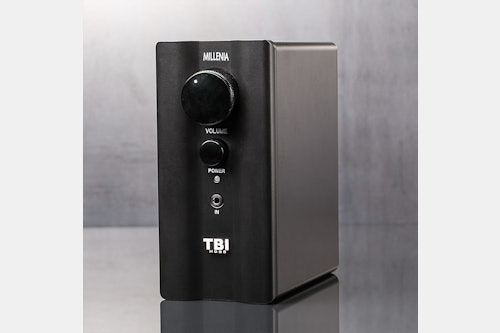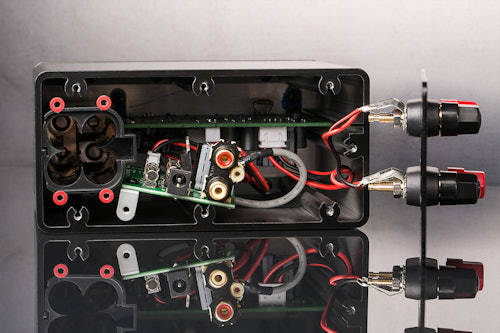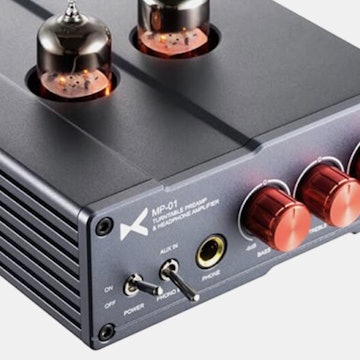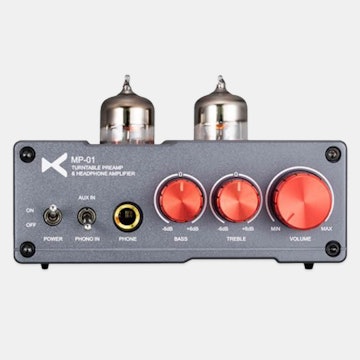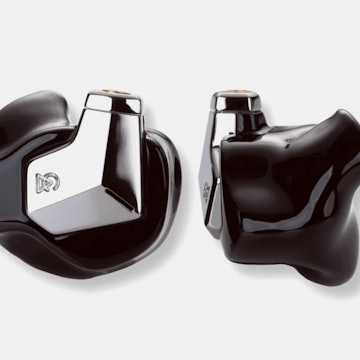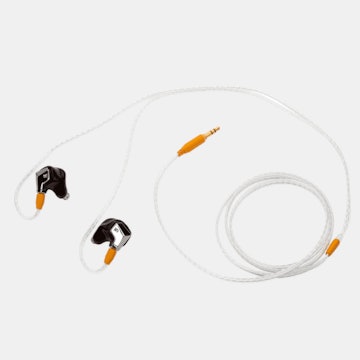Click to view our Accessibility Statement or contact us with accessibility-related questions














Millenia MG3 Audio Digital Amplifier
Millenia MG3 Audio Digital Amplifier
bookmark_border
Where's the price?
To negotiate the best possible price for our customers, we agree to hide prices prior to logging in.
15 requests

search
close
Sort by: Newest
keyboard_arrow_downlogan.brandt
0
Mar 31, 2015
I'm going to give this guy a try. I just spoke with Mr. Jan Plummer who seems like a stand-up guy and will stand behind his products!

K.T.N
1264
Mar 29, 2015
What got me excited about this amp is the great reviews. I've read Positive Feedback for many years, and I trust their reviews. They were a trusted part of my research as I went through a decades long journey to put together good sounding stereo systems for my enjoyment.
So the review from John Hoffman really piqued my interest.
I'm not an amp designer, but I did a lot of tinkering with these class D amps from back when they were first marketed and sold in those cheap little curved-top plastic cases with the cheap spring loaded speaker clips in the back. I did a lot of tinkering with power supplies, input and output caps, etc. to improve the sound.
I also put together some of the better DIY amp kits from 41Hz.com and diyparadise.com, as well as tried a bunch of class D offerings from Indeed and Topping.
Believe me, some are good, but a lot fall short of hopes and expectations. Meaning that just because it's class D, it doesn't mean it will be a giant killer.
Some can be giant killers (generally the ones that you put together yourself and have control over the input and output caps, etc). But some are flat out disappointing, and others could be considered good, even great, values, but you would not consider them your endgame amps.
Which is why I got excited about this amp.
Whatever the technology or marketing terms they are using, it looks like they took it to that next step of tweaking the sound to bring it to that higher lever. If it's as good a John Hoffman's review makes it out to be, I'd happily pay $300 for that.
I could build (and have built) some really good sounding class D amps from kits, but seeing as I have no time for tweaking anything these days, I don't mind paying more for someone to do that for me.
In the end, as long as the technology is stable and sound, and the amp gives me the sound I seek at a good price, I'm not to worried about how they market the technology. This ones seems like it could fulfill the promise of great sound.
So the review from John Hoffman really piqued my interest.
I'm not an amp designer, but I did a lot of tinkering with these class D amps from back when they were first marketed and sold in those cheap little curved-top plastic cases with the cheap spring loaded speaker clips in the back. I did a lot of tinkering with power supplies, input and output caps, etc. to improve the sound.
I also put together some of the better DIY amp kits from 41Hz.com and diyparadise.com, as well as tried a bunch of class D offerings from Indeed and Topping.
Believe me, some are good, but a lot fall short of hopes and expectations. Meaning that just because it's class D, it doesn't mean it will be a giant killer.
Some can be giant killers (generally the ones that you put together yourself and have control over the input and output caps, etc). But some are flat out disappointing, and others could be considered good, even great, values, but you would not consider them your endgame amps.
Which is why I got excited about this amp.
Whatever the technology or marketing terms they are using, it looks like they took it to that next step of tweaking the sound to bring it to that higher lever. If it's as good a John Hoffman's review makes it out to be, I'd happily pay $300 for that.
I could build (and have built) some really good sounding class D amps from kits, but seeing as I have no time for tweaking anything these days, I don't mind paying more for someone to do that for me.
In the end, as long as the technology is stable and sound, and the amp gives me the sound I seek at a good price, I'm not to worried about how they market the technology. This ones seems like it could fulfill the promise of great sound.

Anonymouse
216
Mar 31, 2015
K.T.NDunno why they write the brand name in Comic Sans, though. Doesn't exactly help it look up-market.

Anonymouse
216
Mar 29, 2015
Can't most of the ~$30 Tripath amps on eBay run from DC? Just hack up a NiMH or Ni-Cad battery of the right voltage and a cheap charger, and you can have as much capacity as you want, dirt cheap. Class T sounds surprisingly good if it has enough power for your application (and it'd have the same or more than this Millenia), and a hell of a lot better than the price tag would have you expect, but you still get the digital efficiency for long battery life.
US$500 for two small class-D stereo modules with no PSU seems quite high compared to component pricing, and I wouldn't expect it to offer noticably greater performance than a decent-quality generic Tripath design like a Topping or something.
US$500 for two small class-D stereo modules with no PSU seems quite high compared to component pricing, and I wouldn't expect it to offer noticably greater performance than a decent-quality generic Tripath design like a Topping or something.
Maniac
18
Mar 27, 2015
Just show you guys how "un-unique" their setup is, check out the link below, it is from Texas Instrument, a list of their Class D + BTL amp chips, or something TBI call Class BD. Many audiophile amp also uses chip from Ti, it's all depend on how well the chip is taken care of.
http://www.ti.com/lsds/ti/audio-ic/mid-high-power-amplifier-product.page#p776=&p89=Class%20D&a310=BTL%20Output&columnOrderString=o1,o4,p2608,p2609,p2610,p2611,p2612,p2613,p2614,p2615,p1342,p776,p2616,p2617,p2618,p2982,p2621,p1056,p2622,p1498,p1192,p2954,a310,p89
I've set the filter so that all you see is something that fits into their Class BD's description. Chances are, your cellphone's speaker is driven with a class D amp setup in BTL mode. Since this is one of the few ways you can fit a fairly powerful amp in a cellphone.
I'm not against this amp in any way or form, nor am I saying it is good or bad. I'm just against those absurd hype! Cambridge audio did something similar too, they started calling their amp Class XD, and started to describe how "normal amp" have crossover distortion and stuff, and how their uniquely tweaked Class XD fixed all that. Only one problem, the normal amp they were describing is called Class B, and their solution is called Class AB. Nothing that wasn't invented eons ago by brilliant engineers and scientists.
http://www.ti.com/lsds/ti/audio-ic/mid-high-power-amplifier-product.page#p776=&p89=Class%20D&a310=BTL%20Output&columnOrderString=o1,o4,p2608,p2609,p2610,p2611,p2612,p2613,p2614,p2615,p1342,p776,p2616,p2617,p2618,p2982,p2621,p1056,p2622,p1498,p1192,p2954,a310,p89
I've set the filter so that all you see is something that fits into their Class BD's description. Chances are, your cellphone's speaker is driven with a class D amp setup in BTL mode. Since this is one of the few ways you can fit a fairly powerful amp in a cellphone.
I'm not against this amp in any way or form, nor am I saying it is good or bad. I'm just against those absurd hype! Cambridge audio did something similar too, they started calling their amp Class XD, and started to describe how "normal amp" have crossover distortion and stuff, and how their uniquely tweaked Class XD fixed all that. Only one problem, the normal amp they were describing is called Class B, and their solution is called Class AB. Nothing that wasn't invented eons ago by brilliant engineers and scientists.

golden
110
Mar 28, 2015
ManiacIsn't this still the best amp that has a small footprint and also sounds great through batteries? I'm looking for a good amplifier that has very good performance even through rechargeable batteries for a transportable small monitor setup that I would be taking with me around for most of my near field listening. Since you seem very technically knowledgeable on the subject, what would you recommend? I am currently using the only battery powered amp solution I know of, the Dayton DTA-1 amp and it works fine and has good sound quality, but was thinking this must be a noticeable big step up.
Omnicide
29
Mar 26, 2015
I would never, ever, get this amp for this price. Get the NAD D3020 or maybe one or two AudioSource AMP-100 instead.
Maniac
18
Mar 27, 2015
OmnicideFrom the circuit complexity, it does look like one of those wildly popular Class T little amp from long ago.
BTW, your AudioSource AMP-100 is the one I was saying that could be setup to run in BTL mode, the power jump from 50+50 to 150W.
"2-channel 100-watt (50 watts x 2) power amplifier (provides 150 watts RMS bridged mono power)"
BTW, your AudioSource AMP-100 is the one I was saying that could be setup to run in BTL mode, the power jump from 50+50 to 150W.
"2-channel 100-watt (50 watts x 2) power amplifier (provides 150 watts RMS bridged mono power)"

abernardi
3
Mar 26, 2015
I've had this amp for a little over a year and I can tell you, to my ears it's a lot of bang for the buck. It's better using battery power. I've tried using it for headphones with a resistor network, but am still getting a lot of background hiss on my LCD-2's. Maybe I don't have the formula right. Perfect for a desktop system tho
Maniac
18
Mar 26, 2015
You can also turn any two identical regular amp into one bridge tie loaded amp, which happens to be the case for most stereo amps. Basically turning it into one mono amp with quite a bit more power, and some stereo amp even come with the switch to allow you to do that. If it didn't come with a switch, you can still turn it into a BTL setup by feeding one channel normal signal, and the other a reverse signal.
It doesn't care what type of amp it is, A/AB/C/D/Whatever, it will just work. (if the amp is already setup in BTL, then of course you cannot wire two BTL amp together into one bigger amp.).
It doesn't care what type of amp it is, A/AB/C/D/Whatever, it will just work. (if the amp is already setup in BTL, then of course you cannot wire two BTL amp together into one bigger amp.).
Maniac
18
Mar 25, 2015
The whole Class BD is just bullshit...
Let me put it more simply about the design of the amp, I have been building, selling and sometimes designing audio products, and the whole overload of useless jargon and acronym is just stupid.
Now, from the design and power source of the amp, we can see that this is what we call a BTL arrangement, BTL means Bridge Tied Load. Which means that both speaker terminal have an amp behind it, the black binding post is no longer ground wire, but the reverse signal of the red binding post. It have NOTHING to do with Class B, AB, D, or A... It is just one way to wire up some amps.
The result? It can produce up to 4 times more power than what is otherwise possible with the same power supply voltage.
Why do the designer use this design????
There are several reasons that designer use this setup.
#1: Cost, BTL amp does not need to have both + and - voltage supply, it only need a much cheaper and easily available single voltage power supply. Better still, no complicated inverter to turn a cheap single voltage power to dual voltage, or just complicated and more expensive dual rail power supply. This also means that the company can just pick and choose from the MILLIONS of available power supply in the market, you never have to worry about the power supply sourcing problem. If company A don't have it in stock, if company B want to charge more, if company C refuse your order because it didn't meet their 5 million dollar minimum order requirement, if company D just couldn't be communicated, you still have more companies than you can shake a stick at, that you can get the power supply from.
#2: Cost Per Watt: For the same amount of cost, you can deliver more watts. There are other ways to use single voltage power without using BTL, but ALL of them involves sacrificing some power (Capacitor coupled circuit) or extra cost (Transformer coupled, like in vacuum amps).
#3: Tuning: Because BTL setup will cancel out some characteristics and amplify others, it is sometimes used to tune the sound effect of some amplifiers. And of course, it can also cancel out the desired tonal quality depending on how it is setup. Some amp sound better when in BTL setup, while some very musical ones become as bland as water.
Let me put it more simply about the design of the amp, I have been building, selling and sometimes designing audio products, and the whole overload of useless jargon and acronym is just stupid.
Now, from the design and power source of the amp, we can see that this is what we call a BTL arrangement, BTL means Bridge Tied Load. Which means that both speaker terminal have an amp behind it, the black binding post is no longer ground wire, but the reverse signal of the red binding post. It have NOTHING to do with Class B, AB, D, or A... It is just one way to wire up some amps.
The result? It can produce up to 4 times more power than what is otherwise possible with the same power supply voltage.
Why do the designer use this design????
There are several reasons that designer use this setup.
#1: Cost, BTL amp does not need to have both + and - voltage supply, it only need a much cheaper and easily available single voltage power supply. Better still, no complicated inverter to turn a cheap single voltage power to dual voltage, or just complicated and more expensive dual rail power supply. This also means that the company can just pick and choose from the MILLIONS of available power supply in the market, you never have to worry about the power supply sourcing problem. If company A don't have it in stock, if company B want to charge more, if company C refuse your order because it didn't meet their 5 million dollar minimum order requirement, if company D just couldn't be communicated, you still have more companies than you can shake a stick at, that you can get the power supply from.
#2: Cost Per Watt: For the same amount of cost, you can deliver more watts. There are other ways to use single voltage power without using BTL, but ALL of them involves sacrificing some power (Capacitor coupled circuit) or extra cost (Transformer coupled, like in vacuum amps).
#3: Tuning: Because BTL setup will cancel out some characteristics and amplify others, it is sometimes used to tune the sound effect of some amplifiers. And of course, it can also cancel out the desired tonal quality depending on how it is setup. Some amp sound better when in BTL setup, while some very musical ones become as bland as water.

Anonymouse
216
Mar 25, 2015
Massdrop blurb:
"Built inside the unit is a uniquely designed BD amplifier in which the output is generated differently between the positive and negative speaker terminals, and can easily handle fast response times."
Some online review article: (http://www.positive-feedback.com/Issue62/millenia.htm) "The Millenia amplifier uses an unusual output stage configuration that is essentially a Class BD arrangement, which is different than the more widely used Class D topology. The output of the amplifier is generated differentially between the + and – speaker terminals, and is capable of extremely fast response times."
Lifting sections of another's work and appropriating them for you own use, without citing, is plagiarism, even if you reword it to try to disguise this. Simply linking to the article as "further reading" does not constitute citing it unless you also specify that it was a source (in this case, apparently the only source) of the content in your own article.
When you change the wording around to the point that most of it no longer makes any sense, though, I wonder if it's technically still plagiarism if you've destroyed most of the content you were trying to convey? The blurb author is in a bit of a grey-area, then, where it appears he's technically attempted plagiarism, but not all the content he's attempted to co-opt has survived the transition. He tries to present all the points in the original quote, even in the same order(!), but destroys a lot of the meaning with strange technical phrasing, possibly because he doesn't fully understand what he's reading?
Massdrop blurb again: "The device’s preamp works to properly match the impedance to the music source rather than alter the gain and comes with a BurrBrown op, which provides a low current and high slew rate."
Article again: "The preamp stage of the Millenia amplifier is not a gain stage, for its primary purpose is to provide impedance matching with the source component. Impedance mismatches between amplifier input stages and source components is an area where sound quality can be severely compromised, and the solution implemented in the TBI is an effective means to solve this issue. A newly developed Burr Brown op is used in this circuit, and has a low current and high slew rate characteristics."
Again, the original makes sense, and the Massdrop-translated-to-adverspeak doesn't, even though all main points from the original are still there and in the same order, even if they all now blend meaninglessly into each other somewhat. And there's more examples, if you can be bothered to compare the two further.
(Interesting that the "Burr Brown op" phrase is in the original, too, though. I assume they mean "op-amp", but I've never, ever, seen it written as just "op" before.)
Is this standard Massdrop copy-writing practice now? Just find a review of the product online and edit it down and rephrase/reword it enough that the text won't turn up the original in a Google search? I guess that's easier than communicating with the vendor, experimenting with the product, and actually doing your own research, then conveying that understanding in your own words. Much fewer steps.
Some online review article: (http://www.positive-feedback.com/Issue62/millenia.htm) "The Millenia amplifier uses an unusual output stage configuration that is essentially a Class BD arrangement, which is different than the more widely used Class D topology. The output of the amplifier is generated differentially between the + and – speaker terminals, and is capable of extremely fast response times."
Lifting sections of another's work and appropriating them for you own use, without citing, is plagiarism, even if you reword it to try to disguise this. Simply linking to the article as "further reading" does not constitute citing it unless you also specify that it was a source (in this case, apparently the only source) of the content in your own article.
When you change the wording around to the point that most of it no longer makes any sense, though, I wonder if it's technically still plagiarism if you've destroyed most of the content you were trying to convey? The blurb author is in a bit of a grey-area, then, where it appears he's technically attempted plagiarism, but not all the content he's attempted to co-opt has survived the transition. He tries to present all the points in the original quote, even in the same order(!), but destroys a lot of the meaning with strange technical phrasing, possibly because he doesn't fully understand what he's reading?
Massdrop blurb again: "The device’s preamp works to properly match the impedance to the music source rather than alter the gain and comes with a BurrBrown op, which provides a low current and high slew rate."
Article again: "The preamp stage of the Millenia amplifier is not a gain stage, for its primary purpose is to provide impedance matching with the source component. Impedance mismatches between amplifier input stages and source components is an area where sound quality can be severely compromised, and the solution implemented in the TBI is an effective means to solve this issue. A newly developed Burr Brown op is used in this circuit, and has a low current and high slew rate characteristics."
Again, the original makes sense, and the Massdrop-translated-to-adverspeak doesn't, even though all main points from the original are still there and in the same order, even if they all now blend meaninglessly into each other somewhat. And there's more examples, if you can be bothered to compare the two further.
(Interesting that the "Burr Brown op" phrase is in the original, too, though. I assume they mean "op-amp", but I've never, ever, seen it written as just "op" before.)
Is this standard Massdrop copy-writing practice now? Just find a review of the product online and edit it down and rephrase/reword it enough that the text won't turn up the original in a Google search? I guess that's easier than communicating with the vendor, experimenting with the product, and actually doing your own research, then conveying that understanding in your own words. Much fewer steps.

deharrison
33
Mar 25, 2015
AnonymouseI think you may have hit the nail squarely on the head. I am dumbfounded daily by the absurd and downright inaccurate descriptions of the audio products offered here.
logan.brandt
0
Mar 25, 2015
I'm really seriously considering trying one of these after reading some very promising user reviews. I wonder though, how much (if any) of an improvement this would be over a Topping/Indeed tripath amp at 1/3 the cost?
Showing 16 of 22
Recent Activity
